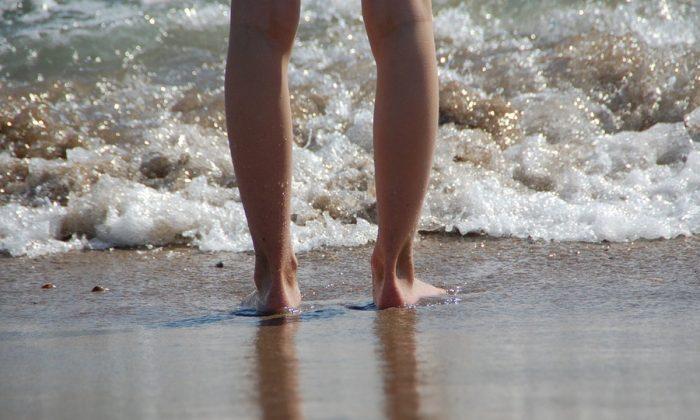A man in Texas dipped his toes in the ocean near Waters Edge Park by downtown Corpus Christi, not realizing that it would lead to severe infection and multiple life-saving surgeries.
People can contract vibriosis by eating raw or uncooked shellfish, particularly oysters, said the CDC. People can also contract it if they expose an open wound to sea or brackish water, as in Perez’s case.
Perez told My San Antonio that doctors prescribed him antibiotics but his infection continued even after several days, leading to a giant blister on his foot.
The ordeal continued and he had to undergo four life-saving surgeries that resulted in the removal of most of his flesh on the right leg.
“I’m never going to be the same anymore,” Perez told My San Antonio. “I know I’m not going to walk normal.”
Perez is currently waiting for a plastic surgeon to cover his exposed leg with skin grafts. He was a homeless man before he caught vibriosis and will have to return to the streets after he recovers.
The CDC said 80 percent of vibriosis cases happen between May and October when the seawater is warmer.
“People with compromised immune systems, especially those with chronic liver disease, are more likely to get vibriosis. Eating raw seafood, particularly oysters, and exposing open wounds to saltwater or brackish water can increase a person’s chance for getting vibriosis,” said the CDC on its website.
Another vibriosis case happened last year in South Korea. A man had his left forearm amputated after developing a fever and terrible pain hours after eating raw fish.
“A 71-year-old man presented to the emergency department with a 2-day history of fever and excruciating pain in his left hand that had developed 12 hours after eating raw seafood,” the journal said.
Doctors identified the infection as vibrio vulnificus, a type of flesh-eating bacteria. “At the time of presentation, hemorrhagic bullae measuring 3.5 (1.3 inches) by 4.5 cm (1.7 inches) had developed on the palm of his left hand,” said the journal in an abstract of the study.
“Surgical intervention was performed urgently, and Vibrio vulnificus was isolated,” the journal also stated.
Ways to Prevent Vibriosis
CDC lists the following ways to prevent vibriosis:- Cook shellfish and oysters before eating them. Don’t eat them raw.
- Wash your hands with soap after handling raw shellfish.
- If you have a wound, don’t enter the sea or brackish water or before entering cover your wound with a waterproof bandage. Brackish waters are where the sea and the river water meet.
- Wash wounds after they get exposed to seawater.






Friends Read Free